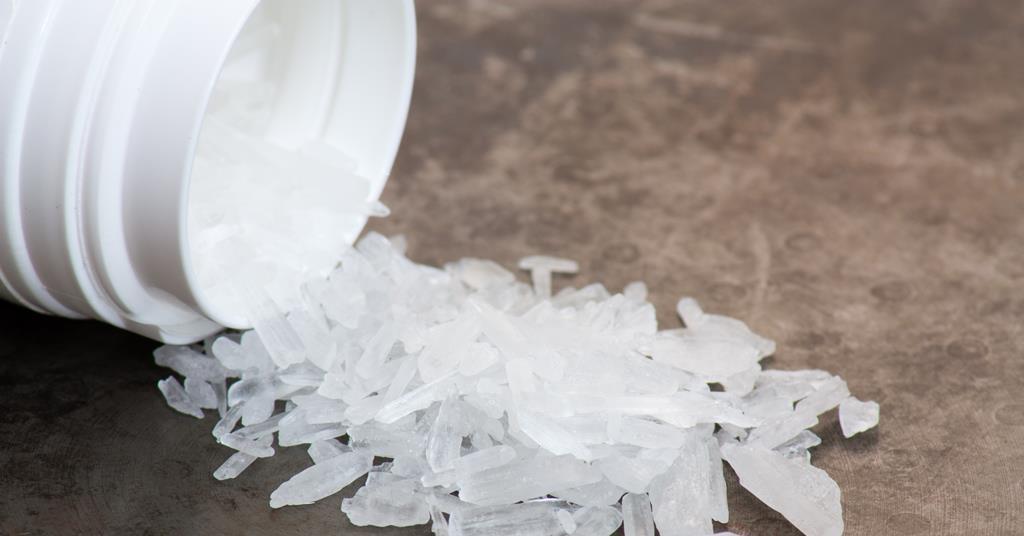If you want to know how to get meth out of your system at home, then you are in the right place.
Let's find out how we can detox at home safely.
The decision to stop using methamphetamine, also known as crystal meth, is fraught with problems.
To begin with, meth addiction is one of the most frequent substance misuse illnesses, with substantial overall health repercussions.
Second, it is not as simple as it may appear to get meth out of your system safely and effectively.
If you've been battling with a methamphetamine addiction, quitting cold turkey could put your life in jeopardy.
We'll go over more than just how to get meth out of your system; we'll also go over the dangers of meth abuse, how to safely detox, and the treatment choices you'll need to ensure that you never have to worry about getting meth out of your system again.
Table of Contents
What Is Meth Addiction Or Meth Abuse?
Meth stands for methamphetamine, but it's also known as speed, chalked, cranked, crystal meth, and other slang words.
Meth was first brought into the medical profession as a stimulant prescription drug to treat with certain illnesses like ADHD. Meth, on the other hand, is most generally manufactured and then used illegally due to its high addictive potential.
According to the Centers for Disease Control and Prevention (CDC), approximately 1.5 million persons in the United States are addicted to meth. (So you are not alone.)
These figures are climbing as the number of people battling meth addiction, and its health repercussions rise in certain places.
Scarily, the number of persons who have died as a result of a meth overdose has risen dramatically in recent years.
Even for individuals who do not overdose tragically, the long-term repercussions of meth addiction can be devastating.
Meth addiction frequently follows a pattern. People do not understand how addicted they are on the substance at first. They take meth to experience a brief burst of happiness, but it is transient, meaning it fades rapidly and leaves them wanting more.
If you use meth in any form, including smoking, injecting, or snorting, you may be wondering how to get it out of your system for a variety of reasons.
Perhaps you need to pass a drug test at work, or perhaps you want to start a process of detoxing from your addiction.
Unfortunately, while you would assume meth might leave your system in as little as 10 hours, it can actually be discovered in your urine & hair follicles for months or weeks after you take it.
Meth's Side Effects On The Body
Although if you understand how to remove meth out of your system, you may experience short- and long-term adverse effects as a result of your addiction.
The chemical nature of meth, which typically includes hazardous poisons comparable to those found in household cleaners, explains why the drug's adverse effects are so severe.
When you have a crystal meth addiction, you are likely to experience the following physical adverse effects:
- Insomnia
- Increase in heartbeat
- Breathing difficulty
- Appetite fluctuations
- Extreme itchiness in the mouth after using meth
- Sometimes Loss of memory
Furthermore, meth addiction results in significant and sometimes irreparable mental health consequences. These are some of the negative effects:
Paranoia, hallucinations, and delusions are all symptoms of anxiety.
The long-term state of meth psychosis may be one of the most frightening mental health hazards associated with meth usage.
According to studies, about half of meth users develop psychotic symptoms. These symptoms include seeing or hearing things that aren't there, worrying that somebody (or something) is just out to get you, and behaving violently toward yourself or others.
Unfortunately, getting meth out of your system is a complex process. Because while you may be able to actually get rid of the drugs so that they no longer circulate throughout your system, the mental health consequences are typically still present.
This is clearly a case where folks haven't gone through with a safe meth detox.
What to Expect While Detoxing From Meth
Withdrawal is an inevitable part of any drug addiction. You may encounter significant withdrawal symptoms if you are detoxing from methamphetamine. Detoxing on your own is ineffective for this reason.
Numerous people who try an unsupervised meth detox discover that the symptoms are so distressing that they either seek medical help or return to using the substance to find relief.
This occurs when your body and mind get reliant on the chemicals in meth, making it exceedingly difficult to operate without the appropriate treatments.
Following are some withdrawal symptoms to be aware of:
- Mental illness
- Body pains and tremors
- Extreme tiredness
- Eating Disorder
- Vomiting & Seizures
Meth detox isn't something that you should ever try on your own, as these symptoms demonstrate.
Instead, seek out treatment centres that provide medically supervised detoxification. You'll discover how to get meth out of your system safely and under medical supervision in these programmes.
Please keep in mind that this guide to getting meth out of your system is only the first step on the long road to full recovery.
Knowing how to get meth out of your system is more than just physical labour; it also entails the acquisition of critical skills that will help you avoid drug use in the future.
As a result, once you've properly detoxed from meth's destructive effects, it'll be time to focus on the mental and emotional aspects of your addiction.
Methods for Detoxing at Home
When a meth user is planning for a drug test or trying to abstain legitimately, they may try to do so at home. As an effort to speed up the process, this technique may include a variety of methods.
However, these methods have not been professionally shown to aid with meth withdrawal, and detoxing at home is generally discouraged for a variety of reasons.
For one thing, and maybe most crucially, meth withdrawal symptoms can be extremely unpleasant. Although they are not usually considered life-threatening, there is always the possibility of unforeseeable problems.
In addition, the beginning of these symptoms frequently leads to the user resuming use in order to alleviate the negative effects and feel better.
Second, an at home detox has no effect on a person's ability to use again. Third, long-term treatment programs that involve therapy, counselling, and other forms of assistance are necessary for treating addiction because it is a chronic condition.
People who do not receive professional treatment may not discover more about the true reasons of their addiction and develop the healthy coping skills required to maintain sobriety for an extended period of time.
However, there are a few strategies that people who choose to detox at home may find useful.
First, however, keep in mind that scientific evidence shows that these treatments are routinely safe and effective.
Increase Liquid Consumption
For a variety of reasons, you may be wondering how to get meth out of your system. Increased fluid intake, particularly water, is one technique. Drinking an excessive number of liquids may help to dilute the meth in a person's system, as well as enhance urine output and toxin elimination.
Some people do this by using herbal pills or kits that claim to assist them to pass a drug test.
Of course, there are a few disadvantages to this strategy. One advantage of experts who evaluate testing results is that they can usually tell if the urine has been diluted.
It can occur by accident, but it's usually done on purpose. In either situation, the person will almost certainly be compelled to return and retake the test.
Furthermore, there is no assurance that this will be successful.
Also, being dehydrated can lead to a condition called as hyponatremia, which can be dangerous. When this happens, the salt level in the bloodstream drops, and the cells become waterlogged.
Nausea, disorientation, irritability, and lethargy are all possible side effects. Death is uncommon, yet it does happen.
Adding Fiber to Your Diet or Using Supplements or Laxatives
Another method of removing meth from the body is to eliminate it through faeces instead of, or in conjunction with, urine.
This process can be aided by eating high-fiber foods or using fibre supplements. Laxatives can also be utilised for a brief period of time.
The biggest downside is that using laxatives for reasons other than medical problems is considered substance misuse.
Furthermore, their use is unnecessarily intrusive to regular biological functions.
Abusing laxatives can cause severe stomach pain, cramping, rectal bleeding, and bloody stools.
And, as with dilution, an individual who must undergo a drug test must not expect this procedure to guarantee a negative result.
Increase Physical Activity
Intense exercise, according to the hypothesis, can benefit for a variety of reasons. One, it will make a person sweat, possibly heavily, that is another way to flush meth and other chemicals from the body.
Also, vigorous exercise, such as jogging or biking, might induce a person to drink greater fluids, which, as previously said, can aid in the purge.
There are some drawbacks to this strategy as well, such as the fact that it may not be adequate for someone who wants to pass a drug test.
Also, if a person isn't used to that level of activity, they may become dehydrated if they don't drink enough water.
They may also feel extreme weariness or other health problems as a result of putting too much stress on their bodies.
By Taking ‘Niacin'
Niacin is a b-vitamin that may be purchased over-the-counter and is supposed to aid in the removal of toxins from the body.
The central nervous system & metabolism are also reported to benefit from it.
Regardless of how successful it is at getting rid of meth, it's crucial to remember that niacin has some unpleasant side effects even if you know how to get meth out of your system, specifically when used in large doses.
Flushing, itching rashes, nausea, and vomiting are some of the symptoms.
Not everyone who employs these techniques does so in order to pass a drug test. As previously stated, some people are really determined to rehabilitate from meth addiction and desire all the assistance they can get.
However, we cannot emphasise enough the importance of seeking competent medical care and emotional support at this time.
Why Is Medical Detox Important?
Medical detox is the simple answer for how to get meth out of your system.
Patients who choose to go through medical detox are protecting their safety and enhancing their comfort.
In an inpatient setting, people are watched 24 hours a day and can be given drugs to help with many of the harshest withdrawal symptoms.
Relapse is virtually impossible, and complications can be handled as they emerge. In an outpatient setting, the same rules apply, except that patients return home rather of staying in a facility overnight.
Getting Addiction Treatment
It takes more than just physical effort to know how to get meth out of your system. Therefore, patients are encouraged to engage in a thorough addiction treatment program after detox.
While no medicines have been demonstrated to be successful in eliminating meth from the body system, pharmaceuticals that target withdrawal symptoms may help people get through detox and stay sober in the long run.
According to the National Institutes of Health, drugs such as Modafinil, a narcolepsy drug that helps modulate sleep, may be used to treat meth withdrawal symptoms.
Meth addiction is a serious, life-long disease, and individuals who suffer from it deserve the finest possible treatment.
If you or a loved one is suffering from meth addiction, the methods listed above can assist.
If you want to learn more about how to get meth out of your system safely and effectively, share in comments, and I will write more about this topic.






